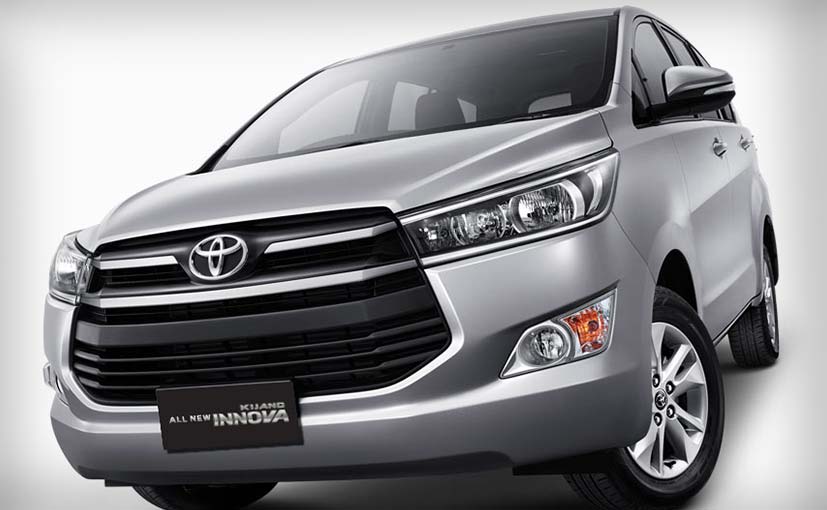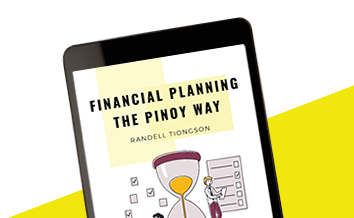5 Ways to Save for Big-Ticket Items
By Randell Tiongson on March 21st, 2016

Buying a car and owning a home – these are part of the Filipino dream; however, saving up for big-ticket expenses, such as a vehicle or a house, may seem like they will take forever. A fresh graduate earning an entry-level salary may not even be able to afford the monthly amortization for these items. A person in his thirties and forties may afford the monthly payments on a car or house loan, but paying such a large amount may be discouraging because it’s still taken out of one’s income. However, owning a car or a home is certainly possible whatever your age is. The key is building the habit – the habit to save, the habit to pay debt regularly, and the habit to stick to one’s goals.
Here are 5 easy ways to save for big-ticket items, so soon enough, owning a car or a house is your reality:
- List down your income and expenses
‘What can’t be measured can’t be improved.’ – It’s an age-old adage.
When it comes to finances, the bottom line is you have to know how much of your money is going in and going out in order to come up with realistic plan for your finances – such as buying a big-ticket item. If you don’t know how much money you’re left in a month after spending, it’ll be very difficult to come up with a payment plan that is realistic and fits your current situation.
What to do:
- Track both your income and expenses.
- Categorize your expenses (e.g. rent, utilities, entertainment, etc.).
- Set a budget according to category.
- Money going out (outflow) should never exceed money going in (inflow).
- In the next month, cut down spending on categories where you overspent.
- Sacrifice today for tomorrow
Nothing great ever comes easily, and your personal finances are no exception. If you want to live in your own home in the future or drive your own car to avoid the horrendous Metro Manila commute, you need to make a few sacrifices today for a better tomorrow.
What to do:
- Forego short-term gains for long-term ones. (e.g. don’t buy a new shirt every month and save the money instead)
- List down your long-term goals in your phone or a place where you’ll see it every day to keep your eyes on the prize.
- To control impulse spending, compare your hourly income to an item’s cost per hour, and then determine if the item’s really worth it. (e.g. if you want to buy a shirt worth Php 800, and you earn Php 200 an hour, it takes 4 hours of working to afford that)
- Save as you would pay a loan
When it comes to paying a loan or your credit card balance, the pressure is on. You’re more determined to tackle your credit card debt or loan balance with the monthly statements you receive. Worse, your balance seems to increase every month in which you don’t pay the full balance because of interest. When saving for a future expense, you’re not as pressured. You don’t have any liabilities (e.g. interest fees, defaulting, collateral) because you haven’t bought a car or a home yet. However, to build the habit of saving for big-ticket items, save for them as diligently as you would pay down a loan.
What to do:
- Know the exact amount you need for your future purchase.
- Create a savings plan (should include how much you should save every month, your timeline for saving among many others, etc.)
- Transfer a percentage of your monthly income from your payroll to your savings accounts during payday. As what Warren Buffett says, “Do not save what is left after spending, but spend what is left after saving.”
- Invest
Investing allows you to save money at a faster rate because the possible return on investment (ROI) beats the interest you earn in your savings account. However, it’s best to know that high reward equals high risk, and investments are not guaranteed. Since you stand to earn more by investing, you stand to lose a lot as well. That shouldn’t scare you away. If you’re diligent to learn and practice, you’ll become a better investor.
What to do:
- Read investment-related resources and attend seminars or conferences. This way, before you even open an investment account, you already have an idea of what to expect.
- Know your purpose or goal for investing. Are you saving for a home in the next five years or for retirement thirty years from now? Knowing you goal allows you to pick the investment most suitable to your situation and preferences.
- Don’t be a one-time investor. Once you open an investment account, put a portion of your monthly income into your investments. This way, you’ll ramp up your savings.
- Increase your revenue sources
There’s no magic trick when it comes to saving more, and there is definitely no substitute for hard work. If you want to save for a big-ticket item in less time, increase your sources of revenue, be it investing or taking a second job. By increasing your monthly income, you’ll be able to put more into savings.
What to do:
- Investing is one way to increase your revenue sources.
- Know your strengths and take up freelance gigs aligned with your strengths. People will pay you for what you are good at and for what they aren’t.
- Save ALL your income from your sidelines. Do not use the money to spend for expenses; otherwise, it beats the purpose of earning more to save more.
Living the Dream
The five steps above will bring you closer to your dream of owning a big-ticket item. Whether this is buying a car or owning a house (or another purchase), you’ll reach your financial goals as long as you build and keep the habit of saving.
Once you reach that point and buy that big-ticket item, it’s best to keep these safe. One way is to keep your discipline of saving since unexpected expenses will arise (home repairs and car maintenance fees). The need to save never really end. Another way is to protect yourself through insurance, be it car or home insurance. Insurance premiums may take a chunk of your income, but you’ll end up paying less for your insurance policy (in the event that you need to make a claim) versus than if you didn’t have insurance at all. To get the most affordable deal on non-life insurance policies, comparison portals such as MoneyMax.ph, allow you to compare different types of insurance from various providers.
You never really stop spending, but this is the importance of building the habit of saving. You never really stop needing to save even after you’ve bought that big-ticket item. Whether it’s paying down debt or saving for a big-ticket item, the key takeaway is building the habit of keeping and growing your personal finances.
Attend the biggest finance and investment event of the year — iCon2016

Click HERE for details
7 Things to Consider Before Buying Your First Car
By Randell Tiongson on March 11th, 2016

The local automotive industry continues to grow, with sales (cars and trucks) increasing by 23% in 2015. This is according to a joint report by the Chamber of Automotive Manufacturers of the Philippines Inc. (CAMPI) and the Truck Manufacturers Association (TMA). Even more, sales of imported cars surged to a growth of 65% in the same year according to the Association of Vehicle Importers and Distributors (AVID). Looking forward, the 2014 Nielsen Global Survey of Automotive Demand reported that car sales are expected to grow in the coming years.
Are you one of those planning to buy a car? A first-time car buyer without an inkling of what to look for? Here are seven things to consider before buying your first car:
- What’s your budget?
For a car worth Php 1 million, you will need Php 200,000 upfront. Despite feeling that you deserve a new ride, ask yourself if you can afford the down payment and the amortization. If not, you can either downgrade to a more affordable car or forego purchasing your dream car until you’ve saved up enough to make the 20% down payment.
- What’s your main purpose for buying a car?
Your main objective is to get from points A to B, but your car can serve numerous secondary functions as well. Assess your purpose for buying a car, and buy one that ticks most of the criteria off your checklist. For example, a sedan is good for going to the office while a pick-up truck is more appropriate for logistics transportation.
- Have you done your research?
From making a pros-and-cons list between automatic and manual vehicles to looking for the most affordable car manufacturer, it’s best to do your research first before purchasing a car. You can also go to branches of the same dealership to get the lowest price on your car through negotiating. Paying in cash or foregoing add-ons can bring the price of the vehicle down.
- What are your financing options?
You may have more than enough to cover the 20% down payment, but how about the remaining 80% of the car’s value? The common option is to take out an auto loan, and you can apply for this in-house or in a separate financial institution. Before you sign the papers and opt for in-house financing, it’s best to go back to point 3 – research. Applying for in-house financing may be less of a hassle, but you can get a better deal elsewhere. Consider all your financing options first and look for the one with the lowest interest rate and flexible payment terms. After this would be the right time to make your decision.
- Can you keep up with the monthly payments?
You’ve finally made a decision on which car and auto loan to get, but are you ready for the monthly payments? A shorter repayment time frame equals a larger amount for car payments so you should have a separate budget for your monthly loan payments.
To stick with your budget, pay down your loan balances the moment you get your salary. This way you’ll avoid paying only the minimum amount due and racking up interest payments. This is because you’re paying down debt first and spending later rather than spending first and paying debt later.
- Are you satisfied with the test drive?
You’ve always dreamt of having car X, and you saved for years to be able to afford said car. You’ve saved up the 20% down payment and have a test drive of the car you want to purchase. If the car doesn’t meet your expectations in terms of ease in maneuvering or other factors upon test driving, then rethink your decision. Do your research again by test driving various cars until you find the best one for your needs and budget.
- Are you ready for the car ownership expenses?
Car expenses don’t end upon purchasing it. Ask yourself – ‘Am I ready for the extra expenses car ownership entails?’
This includes car insurance, toll fees, fuel expenses, and a budget for maintenance check-ups among others. Routine check-ups ensure that your car is in tip-top shape through the years. An empty fuel tank deems your car useless. If you need to pass the toll way every day to get to work, then you need to budget for toll fees. Most importantly, car insurance – with one, you’ll save money in the long run since you pay a lesser amount for your insurance policy than a major repair (in the event that you encounter a road accident without insurance).
To create a realistic budget, list down all your car expenses for one month. For car insurance, MoneyMax.ph, the Philippines’ leading comparison website for car insurance, lets you compare car insurance from different providers to find the most affordable and suitable car insurance for you.
The responsibility of car ownership
Car ownership is a large responsibility and should be given consideration before purchasing one. Whether you’re a first-time, or repeat car buyer, the seven tips above will help guide you in making a decision.
Join us for #iCon2016, the biggest finance and investment conference of the year!

Visit www.bit.ly/GO_ICON2016
Personal Finance for Millennials: Maximizing Today for a Better Tomorrow
By Randell Tiongson on February 24th, 2016
They’re the ones born between 1982 and 2002. The world seems to have a love-hate relationship with this group, and numerous articles have sprouted up titling this group as entitled, lazy, and narcissistic. They can’t seem to stay at one job for too long and expect too much, too soon. Who else are they?
The millennials.
However, if you look at the other end of the spectrum, you’d be surprised at what you’d find. When it comes to personal finance, millennials start saving for retirement at an early age than any other generation. According to the Investment Company Institute, the average age millennial households start saving for retirement is 23 versus the 35 of baby boomers (1946–1964). Even further, in the 2015 Deloitte Millennial survey, 6 out of 10 millennials in emerging markets including the Philippines are ambitious in attaining leadership positions.
Saving for retirement in their 20s? Striving to climb the corporate ladder? These habits may have been born out of a need or through experience – whether it’s seeing their parents lose savings or their homes during the 1997 Asian Financial Crisis or the 2008 Financial Crisis (for others experiencing this tumultuous period personally).
So how has the money game changed for millennials? And how can they start today for a better tomorrow? Here is what you need to know when it comes to personal finance for millennials:
Valuing experience over material goods
In an Eventbrite survey targeting millennials, over 75% or 3 out of 4 people preferred to spend money on experiences rather than material goods. Experiences can range from attending concerts and other events to traveling domestically or internationally.
How does this relate to personal finance? It takes discipline to save up for a ‘travel fund’, and when it comes to money management, it all boils down to habit. Are you indebted with loans? It’s important to build the habit and pay your balance monthly. Did you buy a ‘piso’ fare to Korea or Japan and now need to save up for pocket money? You need to build the habit of saving a portion of your income every month for your future expenses. If you want to experience life instead of being confined in your cubicle, you will need money, and you’ll need to learn how to control, budget, and save.
What is the takeaway? Experiences come at a price since nothing in this world is free. It’s important to build the habit of budgeting and saving so you can experience what life has to offer.
Taking advantage of restlessness
Millennials have a reputation for being job hoppers. Using data from the Bureau of Labor Statistics, the average worker stays at each job for about 4.4 years. For millennials, it’s half that number. Furthermore, 91% of millennials expect to stay less than three years at a job. Whether it’s because of burnout, employer disloyalty, or a career change, many millennials are looking at the next opportunity. They’re restless for new experiences and opportunities. Again, how does this relate to personal finance?
If you can’t sit still for too long, maximize this, whether it’s negotiating for a higher salary when switching jobs or staying with your current employee while multiplying your income streams. For the former, moving jobs can garner you a salary increase between 10% to 20% (or more) while an average raise is at 3% according to the Consumer Price Index of the US Bureau of Labor Statistics. As for the latter, multiplying your income streams will require more effort but result in more disposable income.
What is the takeaway? If you’re the type of person who’s always restless, always itching to do something or looking for the ‘next’ thing, busy yourself in such a way that will benefit your personal finance. Whether it’s moving jobs after two or three years because of no internal growth or looking for ways to earn more, there are multiple ways to keep busy and grow your finances.
Maximizing the digital space
Life, in general, has become more convenient in this digital age. Flight tickets can be booked online. Shopping can be done without going to a brick-and-mortar store. Your money matters are no exception. Transferring money can be done with online banking. Applying for a Philippine investment account can be done by OFWs from their country of employment. Even when it comes to researching for the best credit card, loans, or car insurance, you can do your research and consultation without having to go through a bank or insurance provider. Comparison portals present the information you need when it comes to financial products.
What is the takeaway? Use the worldwide web to your advantage and to help you when it comes to personal finance and money management. Comparison portals save you the time and money when it comes to searching for the credit card or loan with the lowest interest rate. There are apps available for both Android and iOS which help you track your expenses, manage your debt, and report your investments. I actually wrote an article on this entitled, Online Hacks and Apps for Your Personal Finances. If you want to learn more about personal finance and how to handle and grow your money, there are multiple online resources and blogs which you can read for free. Maximize the digital space for a financially and holistically better life.
Personal finance for millennials – it can be a tricky topic. Each generation has similarities and differences, money habits included. Hopefully, the three points above have shed light on how millennials can maximize today for a better tomorrow and brighter financial future.
Let no one despise you for your youth, but set the believers an example in speech, in conduct, in love, in faith, in purity. – 1 Timothy 4:12, ESV






